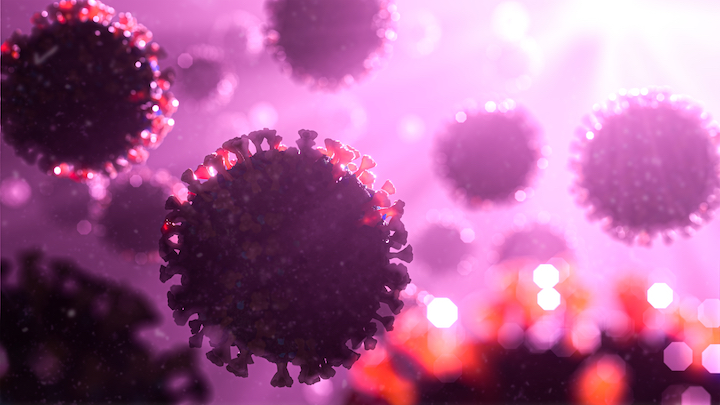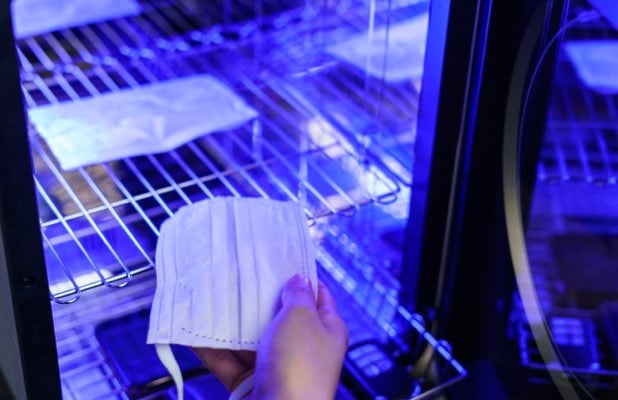Author: Editorial board

Sterilisation with UV rays: an effective use
Continuous exposure to increasingly polluted air, especially for city dwellers, with an increase in the presence of viruses and bacteria potentially harmful to health, has made the need to create methods capable of protecting people's well-being and health clearer.
In recent years, UV sterilisation technology has responded to the growing need for hygiene and safety by creating innovative systems for the sanitisation, disinfection and sterilisation of rooms, objects, air and water.
In this article, we shed light on the use of UV sterilisation systems.
Do you want to stay up-to-date with the latest news in the industry? Click below and subscribe to our newsletter!
UV technology
UV technology can be defined as an effective disinfection and sterilisation method, as it is responsible for the elimination of microorganisms, including spores. In fact, ultraviolet radiation light is capable of killing a wide range of harmful organisms.
What is meant by ultraviolet radiation?
In physics, ultraviolet radiation refers to an interval of electromagnetic radiation belonging to the spectrum with a wavelength immediately longer than the light visible to the human eye, and shorter than that of X-rays. Ultraviolet light is classified into 3 categories: UV-A, UV-B and UV-C. The UV-C category is the shortest radiation and is considered UV germicidal, as microorganisms affected by these rays do not survive prolonged exposure. There are different types of UV-C sterilisation systems that work depending on the type of solution used. However, the operating principle of UV-C sterilisation remains the same.
UV-C attacks the molecular DNA bonds of microorganisms, making them harmless and preventing their growth and reproduction. More specifically, in the case of UV-C LED technology, thanks to a minimal amount of electricity, the LED is able to produce a pre-selected wavelength. UV-C photons are thus emitted that penetrate the cells, damaging the nucleic acid in the DNA of the microorganism and rendering the cell microbiologically inactive. The effectiveness of this action, however, depends on certain factors. The distance between the UV-C source and the surface to be treated, the exposure time of the UV-C rays on the surface in question, and the presence of dust are all variables that affect the effectiveness of the germicidal action of ultraviolet radiation.
Precisely because of its germicidal property, the fields of use of UV sterilisation are multiple and range from the purification of water (e.g. for the preparation of beverages such as coffee) and the purification of air to the sterilisation of everyday objects such as smartphones or masks.
Water sterilisation with UV rays
The sterilisation of water with UV radiation consists of a physical process in which ultraviolet light, with a wavelength between 100 and 280 nanometres, acts on the cells of microorganisms and alters their life cycle. UV-C rays, in particular, with a wavelength in the 240 to 280-nanometre range, activate a photochemical reaction that destroys the genetic information contained in the microorganism's DNA. In this way, the reproductive capacity of the pathogen is greatly reduced. This is a safe and highly effective system that brings with it further advantages: the water, once purified, becomes safer for all who use it, and the taste remains completely unaltered. Today, water sterilisation solutions are increasingly in demand for complete disinfection. This is precisely why systems that can be integrated into beverage dispensing appliances (water tanks of coffee machines, boilers and vending machines) are emerging.

Using UV technology for masks
The effectiveness of ultraviolet radiation is not only proven in the sterilisation of water, but also for the sanitisation of surfaces and objects.
UV-C radiation has been successfully tested in laboratories as a method for sanitising face masks, the protective device used so much during the Covid-19 pandemic. With a view to reusing the medical device without losing its protective effectiveness, many have turned to UV technology devices for mask sterilisation. The available technologies are based on the installation of UV-C LEDs inside the device, which is equipped with an on/off switch. Once the switch is turned on, a sterilisation cycle is triggered that varies in duration and intensity but enables efficient complete disinfection of the UV-irradiated object.
SLIM Srl's customised UV-C light solutions are specifically designed to help protect and enhance the everyday safety of users. To learn more about the realisation of custom UV-C LED light solutions, click on the button below and request a consultation with our technical department for definition, evaluation and a feasibility study. 
